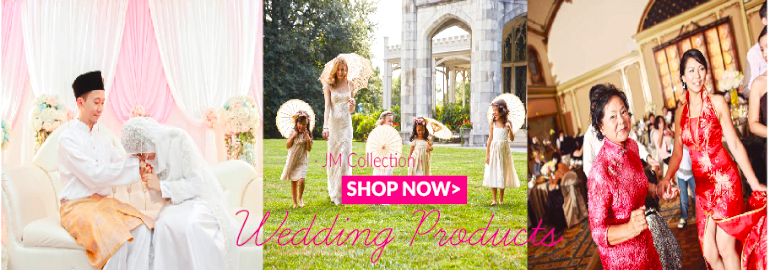How to Choose a Wedding Dress
Congratulations on your engagement! One of the first things you probably picture when envisioning your wedding is the dress. But before you start shopping for a wedding dress, it's a good idea to know what you're looking for.
Trying on a wedding dress.
Do your research. Before you even begin to look around, research gowns. You should always have a bit of knowledge about dresses (and know some of the lingo) before you even set foot into a bridal shop. There are also many bridal magazines that will provide a ton of information, including Brides, Modern Bride, Bridal Guide, WeddingBells, etc. All of these magazines have websites, where you can find quick information without paying for the magazine.
Step 1
Do your research. Before you even begin to look around, research gowns. You should always have a bit of knowledge about dresses (and know some of the lingo) before you even set foot into a bridal shop. There are also many bridal magazines that will provide a ton of information, including Brides, Modern Bride, Bridal Guide, WeddingBells, etc. All of these magazines have websites, where you can find quick information without paying for the magazine.
Ads by Google
Dress Fabrics Malaysia
High Quality Dress Fabric Seller. Shop Online Now At Low, Low Prices!
www.kamdaronline.com/DressFabric
Step 2
Decide on a silhouette. Wedding dresses are made in several different silhouettes. Before considering anything else, know which type of gown will flatter your figure the best. Look at photos of each type. You can browse wedding website message boards and member profiles for photos of real women wearing gowns, rather than relying on professional photos of models wearing them.
- Ball gowns have very full skirts and generally will look beautiful on any body type, unless the bride is very short and small. In this case, it may be overwhelming to her small frame. Ball gowns generally either have crinolines built in or a slip you must wear to support the shape of the gown. Be advised that this extra fabric can be heavy and bulky and will require extra care to wear.
- A-lines usually have a fitted bodice with a skirt that flares gently from the waist to form an "A" shape. They generally work for everyone as well, and are a terrific choice for someone who would like to hide lower body flaws, but does not want a ball gown. A-lines are not as full as ball gowns.
- Sheaths flatter women with slim, balanced figures. They shouldn't be worn by brides who dislike their figures. This gown will not hide any flaws. If you think your thighs or butt are too big, you'll be miserable in this type of dress. Don't try to pull it off because you found a gown you love in this style. You don't want to risk being uncomfortable or self conscious on your wedding day, or regretting your choice every time you look at wedding photos.
- Empire waist gowns have a skirt that falls from just below the breasts. Although usually listed with various waistline types and not always considered a type of silhouette, they are a wonderful choice for a casual, non-formal wedding, or weddings in a tropical climate. They're usually made of light, flowing fabric. They're also excellent for pregnant brides, because they provide extra room in the waist, making them a comfortable choice. They also won't draw as much attention to the belly as a dress with a lower waistline would.
Step 3
Envision your wedding. Picture yourself on yourwedding day. What are you wearing? What silhouette is your gown? What fabric? Is it embroidered or beaded? What color is it? With so many choices for the dress, it can be overwhelming to look through hundreds or thousands of them. Some brides have said that after looking through racks and racks of dresses, they all begin to look the same. So before you even set out to try them on, envision your wedding day and how your dress looks, and jot down a list of things that describe the dress of your daydreams. You don't have to know all the wedding dress terms. Just write down a description of the gown you're envisioning. Example list: "princessy, satin, some shade of white but not pure white, spaghetti straps."
Step 4
Consider the circumstances. A wide variety of factors can affect what makes a particular dress appropriate to the occasion.
- Formal ceremonies usually call for floor length gowns and long trains, while informal ceremonies (especially destination weddings) are a terrific place to wear a shorter gown without a train at all (or a "sweep" train, which just barely brushes the floor). Another example: in some cases, strapless gowns are considered inappropriate for very formal ceremonies.
- If you're getting married in the winter, you may not want to be a very light, thin fabric unless you plan to be inside the entire time. If you're having a beach wedding in the middle of July, you may not want to wear a heavy fabric like duchess satin.
- While the most traditional ceremonies will call for a white gown, in many cases, wedding dresses don't have to be pure white anymore! Many women choose dress colors that best complement their skin tones, ranging from diamond white to ivory to champagne to actual colors (pink, blue, red). Pick the color you feel most beautiful in.
Step 5
Decide on a budget. When deciding on your budget, you don't need to set a very specific price. Just make it a general range, such as $1000 - $1500, or even $1000 - $2000. You can always break this rule later if you're able to and really want to, but it helps to have a general range. Some experts suggest devoting 10% of the overall wedding budget to the bride's attire. Just be sure to remember that "attire" includes not just the gown itself, but the other stuff: veil, shoes, slip, jewelry, gloves, etc. All of these things are optional, of course (except for the slip, which is usually necessary to keep the dress from going between your legs when you walk). But you'll have to factor in the price of whatever items you decide to wear with your gown.
Tips
- Just remember that in the end, it's your wedding, and you CAN do what you want. However, if you decide to wear a mini-skirt short, strapless, backless dress to your super religious ceremony, you may end up coming back to share your lessons learned by writing a wikiHow article on "How To Keep Your Super Religious Parents From Cutting Off Their Monetary Contributions To Your Wedding!"
- If you feel you're most beautiful in a dress, then buy it! No matter what style of wedding you are having or how long before your wedding - you are shopping, if you feel beautiful in it you will shine on the day.
- When you actually go to a store, unlike other clothing stores, wedding gown stores will not often have the dresses in your size. You may be making a decision based on a dress which is too large or too small. This is where deciding on a silhouette beforehand can help you. If you know that empire waists are flattering to your figure, it's easier to take the plunge when you're standing in a dress 4 sizes too big with huge clips in the back and trying to imagine how the correct size will look.
- Wedding dresses are typically sold by designer and style number, even for the less expensive types, so note which designers you like and the style numbers - this can help you find similar styles that may be more affordable than the exact dress you want.
- Another option to consider is renting a dress. This can be a far more affordable way to get yourself a fantastic dress (for the day). The other bonus is not having to clean, store, or ever deal with it again.
- If you are lucky enough to have a master seamstress as a good friend and enough time, you have many more options. The first is to make it from scratch. This can be quite costly with certain fabrics being as expensive as a dress itself. Another option is to severely modify a dress. A size 10 wedding dress may be able to be transformed to an 18 by certain combinations of sizes and capabilities. These dresses can be bought at sales for less than fabric.
- If finances are really an issue, there may be dresses available through charity organizations.



